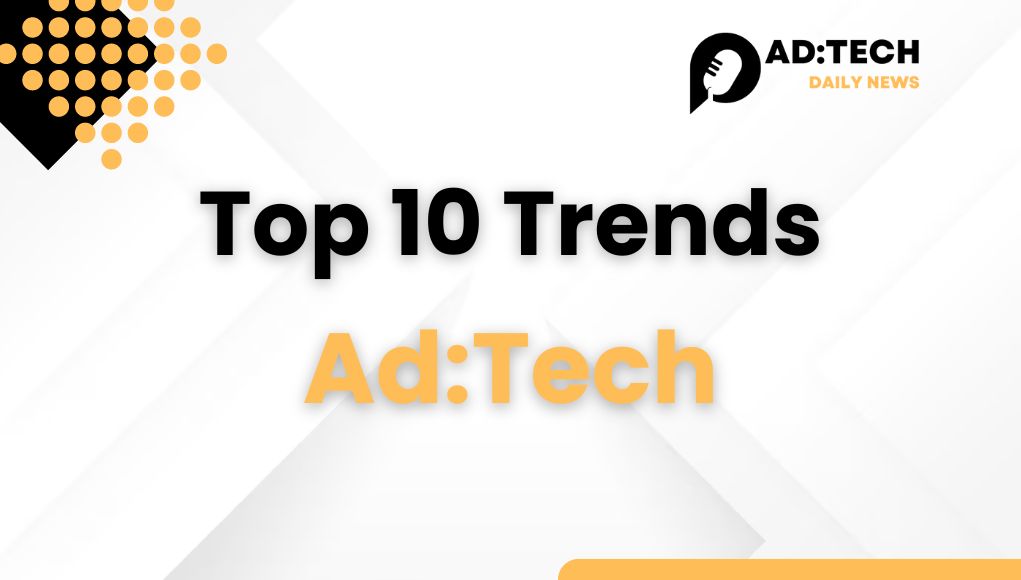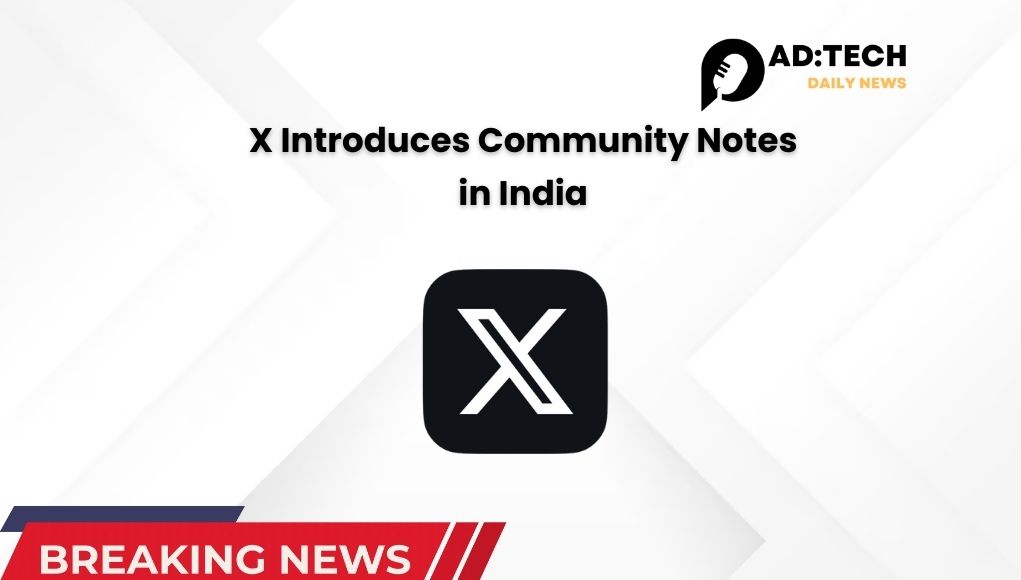Ad Tech 2024
As we step into 2024, the landscape of advertising technology (Ad Tech) continues to evolve at a rapid pace, driven by advancements in technology, changes in consumer behavior, and regulatory developments. This dynamic environment presents both challenges and opportunities for marketers, advertisers, and technology providers. “Ad Tech 2024” isn’t just a buzzword; it’s a multifaceted ecosystem that encompasses the latest trends shaping the future of advertising. From artificial intelligence (AI) and augmented reality (AR) to sustainability in digital advertising, the industry is set to undergo significant transformations. This article explores the top 10 Ad Tech trends in 2024, offering insights into how businesses can navigate and leverage these developments to achieve unprecedented engagement and ROI in their advertising efforts.
Table of Contents
Ad Tech 2024 – The Rise of AI in Personalization
In 2024, artificial intelligence (AI) continues to stand at the forefront of Ad Tech innovation, particularly in the realm of personalized advertising. AI’s ability to analyze vast amounts of data in real-time has enabled advertisers to deliver more relevant, customized content to their target audience than ever before.
AI-powered systems can predict consumer behavior, optimize ad placements, and dynamically adjust messaging to resonate with individual preferences and browsing habits. This level of personalization not only enhances user experience but also significantly improves campaign performance, driving higher engagement rates and conversions.
Furthermore, AI’s role in personalization extends beyond just ad targeting. It includes content creation, where AI tools generate personalized ad copy and visuals, and customer journey optimization, ensuring that every touchpoint is tailored to the user’s interests and behaviors. As we continue through 2024, embracing AI in personalization strategies has become not just an advantage but a necessity for brands aiming to stay competitive in a crowded digital marketplace.
Transitioning Beyond Cookies
The digital advertising world is undergoing a seismic shift in 2024 as it moves beyond traditional cookie-based tracking mechanisms. This transition is largely driven by growing privacy concerns and regulatory changes that demand a more secure and privacy-compliant approach to user data.
In this new era, advertisers and marketers are exploring alternative methods for tracking and targeting that do not compromise user privacy. Solutions such as first-party data collection, privacy-centric universal identifiers, and contextual advertising are gaining momentum. These methods offer the dual benefits of respecting user privacy while still enabling targeted advertising.
First-party data, directly collected from audience interactions, has become a gold mine for advertisers, providing insights into consumer behavior without the need for invasive tracking. Meanwhile, universal identifiers, which offer a common framework for identifying users across platforms without personal data, are facilitating smoother cross-channel marketing efforts.
Contextual advertising, which targets ads based on the content of the web page rather than user behavior, is seeing a resurgence. This approach aligns ads with relevant content, ensuring they reach the right audience in a privacy-friendly manner.
As we navigate through 2024, the challenge for advertisers lies in balancing effective targeting with privacy compliance. The shift away from cookies is not just a regulatory mandate but an opportunity to foster trust and build more meaningful relationships with consumers.
The Evolution of Programmatic Advertising
Programmatic advertising, the automated buying and selling of online ad space, has been at the heart of ad tech for years. In 2024, it’s evolving with new technologies and strategies that enhance efficiency, targeting, and overall campaign effectiveness.
Artificial intelligence and machine learning are now integral to programmatic platforms, enabling more sophisticated bidding strategies, real-time optimization, and predictive analytics. These advancements allow advertisers to maximize their ad spend by targeting users more accurately and adjusting campaigns on the fly based on performance data.
Furthermore, the integration of programmatic advertising with emerging channels such as connected TV (CTV), digital out-of-home (DOOH), and audio platforms is expanding the reach and capabilities of digital campaigns. Advertisers can now deliver more cohesive and immersive experiences across a variety of touchpoints.
Transparency and fraud prevention have also become focal points in the evolution of programmatic advertising. With the aid of blockchain technology and advanced verification tools, advertisers have better insight into where their ads are being placed and who is viewing them, reducing the risk of ad fraud and ensuring higher quality traffic.
As programmatic advertising continues to evolve in 2024, its role in driving efficiency and innovation in digital advertising is undeniable. Advertisers who leverage the latest developments in programmatic technology can expect to see significant improvements in campaign performance and ROI.
Blockchain for Transparency and Security
In the dynamic landscape of Ad Tech 2024, blockchain technology has emerged as a key player in enhancing transparency and security. The decentralized nature of blockchain provides an immutable record of transactions, offering a new level of transparency in ad buys and the supply chain. This advancement addresses long-standing issues in the advertising industry, such as fraud, hidden fees, and the lack of transparency that has historically plagued advertisers and publishers alike.
Blockchain’s role in Ad Tech extends to improving data security and privacy. With consumers increasingly concerned about how their personal information is used and shared, blockchain offers a solution by anonymizing data and giving control back to the users. This not only helps in building trust with consumers but also aligns with the stringent privacy regulations coming into effect around the world.
Moreover, blockchain enables smart contracts, which automate the buying and selling of ads, ensuring that publishers and advertisers adhere to agreed-upon terms. This automation streamlines operations, reduces discrepancies, and ensures faster, more efficient transactions.
As we continue through 2024, the adoption of blockchain in Ad Tech signals a move towards a more secure, transparent, and efficient advertising ecosystem, promising to reshape the industry’s future.
The Expansion of Voice Search Optimization
Voice search optimization has become a cornerstone of Ad Tech in 2024, as voice-assisted devices proliferate and consumers embrace hands-free search. This shift has significant implications for advertisers, who must now optimize their content and strategies for voice search to capture this growing segment of the market.
Optimizing for voice search involves understanding the natural language processing (NLP) capabilities of these devices and how people use them for queries. Voice searches are typically longer, more conversational, and often phrased as questions. Advertisers are adapting by focusing on long-tail keywords, question-based content, and local SEO, as many voice searches are for local information and services.
Furthermore, voice search optimization is not just about being found; it’s about providing concise, direct answers that voice assistants can easily relay to users. This requires creating content that directly answers potential questions, enhancing the likelihood of being featured in voice search results.
The expansion of voice search in 2024 is driving advertisers to rethink their digital strategies, focusing on conversational AI and natural language to connect with audiences through this increasingly popular medium.
Augmented Reality Ads: A New Dimension
Augmented Reality (AR) ads are redefining engagement in Ad Tech 2024, offering immersive experiences that captivate consumers like never before. By overlaying digital information onto the physical world, AR ads create interactive experiences that are not only engaging but also memorable, significantly enhancing brand recall.
The applications of AR in advertising are vast, from virtual try-ons and interactive billboards to in-app experiences that allow consumers to visualize products in their own space before making a purchase. This level of interactivity provides a unique value proposition, encouraging higher engagement rates and deeper connections between brands and their audiences.
Moreover, AR ads offer a wealth of data on user interactions, preferences, and behaviors, enabling advertisers to refine their strategies and offer even more personalized experiences. As technology advances and AR becomes more accessible, the potential for creative, effective advertising is boundless.
In 2024, AR ads represent a convergence of creativity, technology, and data, marking a new era in advertising where experiences are not just seen but felt and lived.
The Surge in CTV and OTT Advertising
Connected TV (CTV) and Over-The-Top (OTT) platforms have taken center stage in the Ad Tech landscape of 2024, revolutionizing how advertisers reach and engage with audiences. With the proliferation of streaming services and the increasing consumption of digital video content, CTV and OTT offer targeted, measurable advertising opportunities that were previously confined to traditional TV advertising.
The surge in CTV and OTT advertising is fueled by their ability to provide granular targeting capabilities and detailed analytics, enabling advertisers to reach specific demographics with precision and track the effectiveness of their campaigns in real-time. This data-driven approach allows for the optimization of ad spend and the delivery of personalized ad experiences that resonate with viewers.
Furthermore, the immersive, full-screen viewing experience of CTV and OTT ads offers higher engagement rates, making them an attractive option for brands looking to capture the attention of consumers in a fragmented media landscape.
As we navigate through 2024, the growth of CTV and OTT advertising signifies a shift towards more agile, audience-centric advertising strategies, leveraging the power of digital to redefine the reach and impact of video advertising.
Interactive and Shoppable Ads
Interactive and shoppable ads represent a significant trend in Ad Tech 2024, blending engagement with instant gratification to redefine the online shopping experience. These ads allow consumers to interact with products or services directly within the ad unit, from exploring features to making purchases, all without leaving the platform they’re on.
The rise of interactive and shoppable ads is a response to the increasing demand for seamless, frictionless shopping experiences. By integrating e-commerce functionalities directly into ads, brands can significantly shorten the consumer journey from discovery to purchase, boosting conversion rates and enhancing the effectiveness of their advertising efforts.
Moreover, interactive elements such as polls, quizzes, and sliders not only engage users but also provide valuable insights into consumer preferences and behaviors. This data can be leveraged to further personalize advertising efforts and improve product offerings.
In 2024, interactive and shoppable ads are transforming passive viewers into active participants, marking a shift towards more dynamic, engaging advertising strategies that meet consumers where they are.
The Impact of 5G on Mobile Advertising
The rollout of 5G technology has had a transformative impact on mobile advertising in 2024, ushering in a new era of speed, connectivity, and immersive experiences. With its ultra-fast download and upload speeds, low latency, and increased capacity, 5G is enabling advertisers to deliver high-quality, interactive content that was previously impossible on mobile devices.
The implications of 5G for mobile advertising are profound. Enhanced video quality, real-time interactivity, and augmented reality (AR) experiences can now be seamlessly integrated into mobile ads, providing users with rich, engaging content that captivates and converts.
Moreover, 5G’s ability to handle vast amounts of data in real-time supports more sophisticated targeting and personalization techniques, ensuring that ads are more relevant and effective. The increased speed and connectivity also improve the overall user experience, reducing load times and buffering, which can be a significant barrier to engagement.
As we look to the future, the impact of 5G on mobile advertising is clear: it enables a level of creativity, interactivity, and personalization that sets a new standard for what is possible in digital advertising.
Embracing Sustainability in Advertising
In 2024, sustainability has become more than just a buzzword; it’s a critical component of strategic planning and execution within the advertising technology sector. Advertisers, brands, and platforms are increasingly recognizing their role in promoting sustainability, both in the content of their ads and in the underlying operational processes.
This trend towards sustainability in advertising is driven by a growing consumer demand for environmentally responsible practices and products. Audiences are more likely to engage with brands that demonstrate a genuine commitment to reducing their carbon footprint and contributing positively to the environment. As a result, ad tech companies are innovating to provide greener solutions that minimize waste and energy consumption.
One of the key areas of focus is the optimization of ad delivery to reduce unnecessary digital waste. Advanced targeting algorithms and machine learning models are being developed to ensure that ads are served only to interested and relevant audiences, thereby reducing the energy consumption associated with displaying ads to disinterested parties.
Additionally, the rise of digital marketplaces for carbon-neutral ad placements is empowering advertisers to make more environmentally friendly choices. These platforms facilitate the purchase of carbon offsets to balance out the carbon footprint of digital ad campaigns, making it easier for companies to achieve their sustainability goals.
The push towards more sustainable advertising practices is also evident in the content of the ads themselves. Brands are increasingly highlighting their environmental initiatives and sustainability credentials, appealing to the values of their audience and differentiating themselves in a crowded marketplace.
As we move through 2024, embracing sustainability in advertising is not only a moral imperative but a strategic advantage. It demonstrates a brand’s commitment to the well-being of the planet and its inhabitants, fostering a deeper connection with consumers who share these values.
Conclusion
As we’ve explored the top 10 Ad Tech trends in 2024, it’s clear that the advertising technology landscape is evolving rapidly, driven by innovation, consumer demand, and the need for greater efficiency and effectiveness. From the rise of AI in personalization and the transition beyond cookies to the embrace of sustainability, these trends are shaping a future where advertising is more targeted, interactive, and responsible.
The successful advertisers of 2024 are those who not only adapt to these changes but also anticipate them, leveraging the latest technologies and practices to create advertising experiences that resonate deeply with consumers. As we look forward, the continued evolution of Ad Tech promises to bring even more opportunities for brands to connect with their audiences in meaningful ways, driving engagement and fostering loyalty in an increasingly digital world.
Key Takeaways
- AI-Powered Personalization is Key: The integration of artificial intelligence into ad tech allows for unprecedented personalization, enabling ads to be tailored to individual consumer behaviors and preferences, significantly enhancing engagement and ROI.
- The Decline of Cookies: With increased privacy concerns and regulatory changes, the advertising industry is moving away from reliance on cookies. Alternatives like first-party data, contextual advertising, and privacy-centric identifiers are becoming vital for targeted advertising.
- Programmatic Advertising Evolves: The incorporation of AI and machine learning into programmatic advertising is making ad buying more efficient and targeted, with blockchain technology enhancing transparency and security.
- Blockchain Boosts Transparency: Blockchain technology is being leveraged for its ability to provide transparency and security in ad transactions, building trust between advertisers and consumers.
- Voice Search Optimization Becomes Crucial: As voice-assisted devices become more prevalent, optimizing content for voice search is essential for brands to remain visible in this growing search space.
- Augmented Reality Ads Engage Consumers: AR technology in ads offers interactive and immersive experiences, creating memorable brand interactions and enhancing consumer engagement.
- CTV and OTT Advertising on the Rise: The shift towards streaming platforms has opened new avenues for targeted, engaging video ads through connected TV and over-the-top media services, offering precision and analytics akin to digital advertising.
- Interactive and Shoppable Ads Drive Conversions: These ads reduce the path to purchase by allowing consumers to interact with products and buy directly from the ad, blending advertising with instant purchasing capabilities.
- 5G Transforms Mobile Advertising: The advent of 5G technology enables richer, more interactive mobile ad experiences with faster load times and enhanced personalization, setting new standards for mobile advertising.
- Sustainability in Advertising Gains Momentum: Ad tech is increasingly focused on sustainability, with brands and platforms adopting greener practices and emphasizing environmental responsibility in their advertising content and operations.
FAQs
- What is driving the personalization trend in advertising technology?
- Artificial intelligence (AI) and machine learning are key drivers, enabling the analysis of vast data sets in real-time to deliver highly personalized advertising experiences based on individual consumer behaviors and preferences.
- Why is the advertising industry moving away from cookies?
- Growing privacy concerns, regulatory changes, and the demand for more secure and privacy-compliant methods of tracking and targeting have led the industry to seek alternatives to cookie-based tracking.
- How is programmatic advertising evolving in 2024?
- The evolution is marked by the integration of AI for better targeting and efficiency, the use of blockchain for transparency and security, and the expansion into new formats like CTV and OTT advertising.
- What role does blockchain play in Ad Tech?
- Blockchain enhances transparency and security in ad transactions, ensures compliance with contracts through smart contracts, and helps combat fraud and discrepancies in ad delivery.
- How can advertisers optimize for voice search?
- By focusing on long-tail keywords, creating question-based content, and improving local SEO, advertisers can optimize their strategies to capture the growing number of voice search queries.
- What makes augmented reality (AR) ads stand out?
- AR ads offer immersive and interactive experiences that are not only engaging but also memorable, significantly enhancing brand recall and consumer engagement.
- What are the benefits of CTV and OTT advertising?
- These platforms offer targeted, measurable advertising opportunities with detailed analytics, allowing for precision targeting and real-time campaign optimization.
- How do interactive and shoppable ads work?
- These ads allow consumers to interact with products and make purchases directly within the ad unit, offering a seamless path from discovery to purchase and boosting conversion rates.
- What impact does 5G technology have on mobile advertising?
- 5G improves the delivery of high-quality, interactive content, supports more sophisticated targeting and personalization techniques, and enhances the overall user experience with faster load times.
- Why is sustainability becoming important in Ad Tech?
- There’s a growing consumer demand for environmentally responsible practices. Advertisers and platforms are incorporating sustainability into their operations and messaging, aiming to minimize their environmental impact and appeal to eco-conscious consumers.




